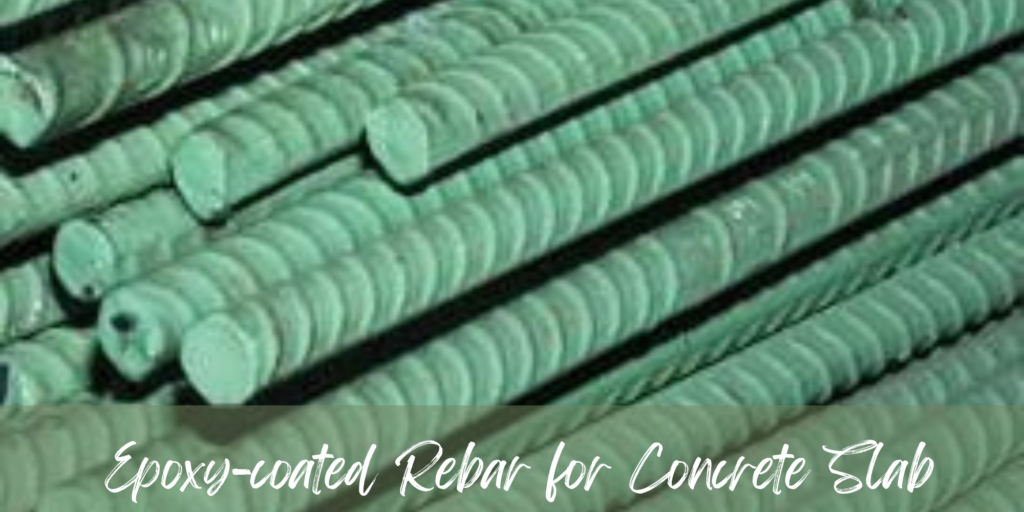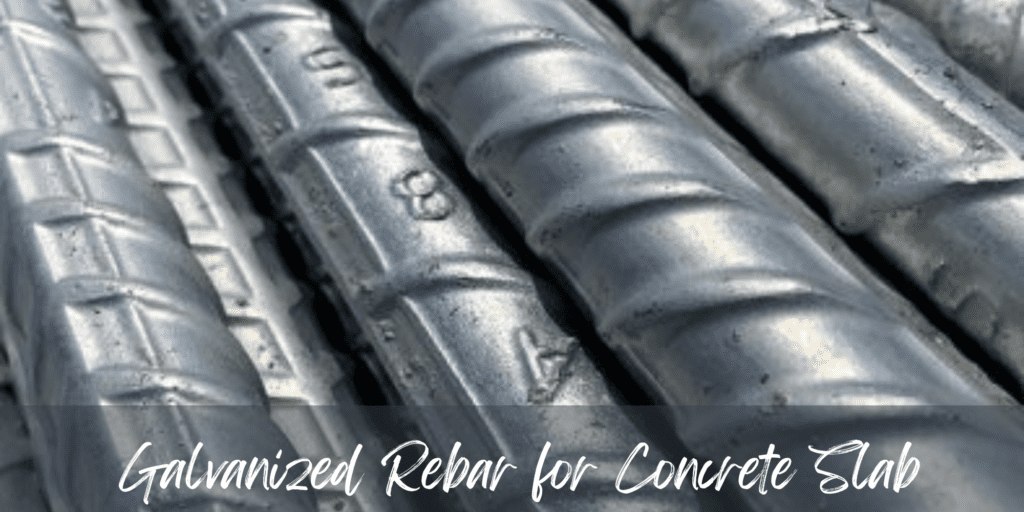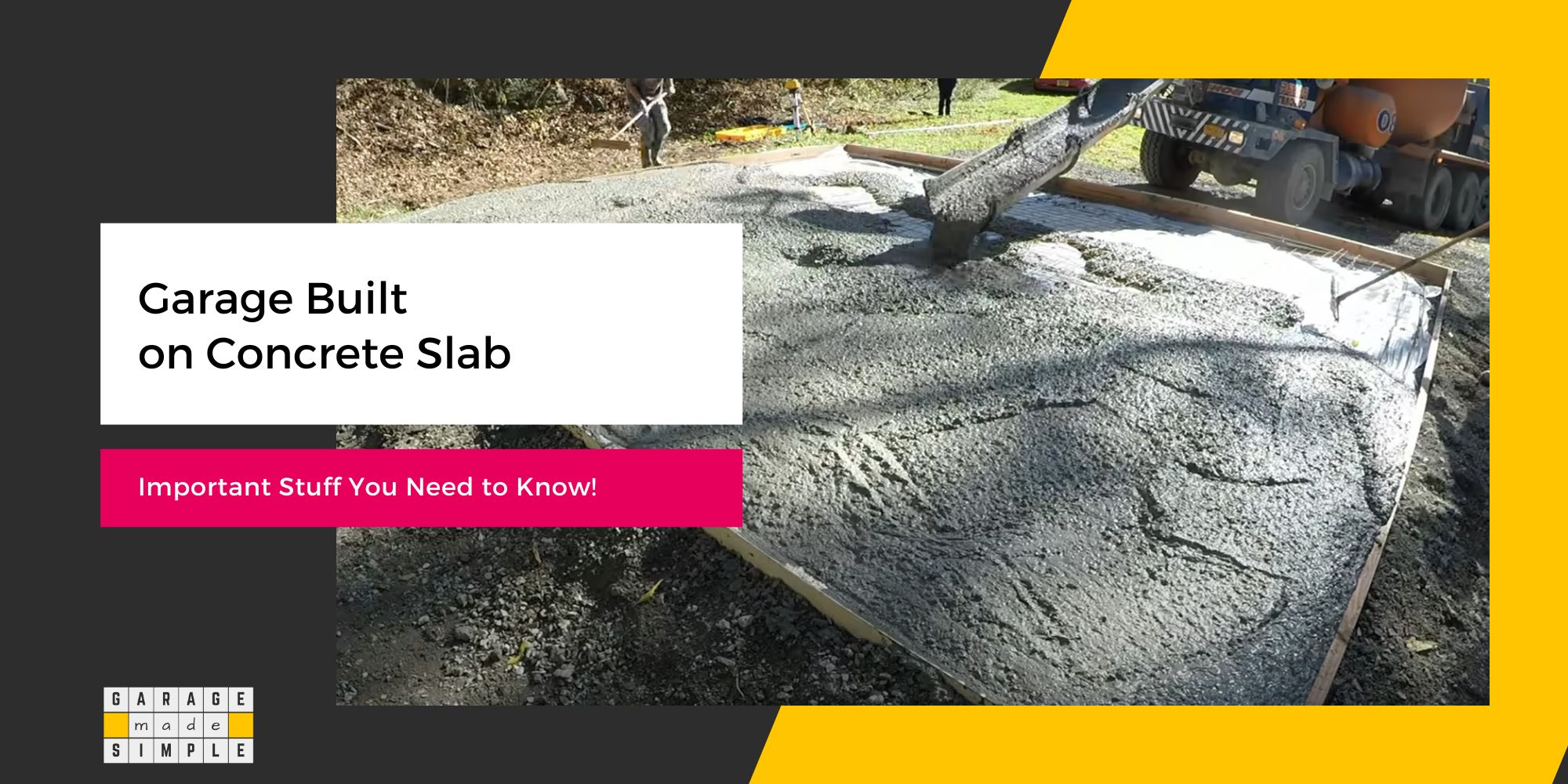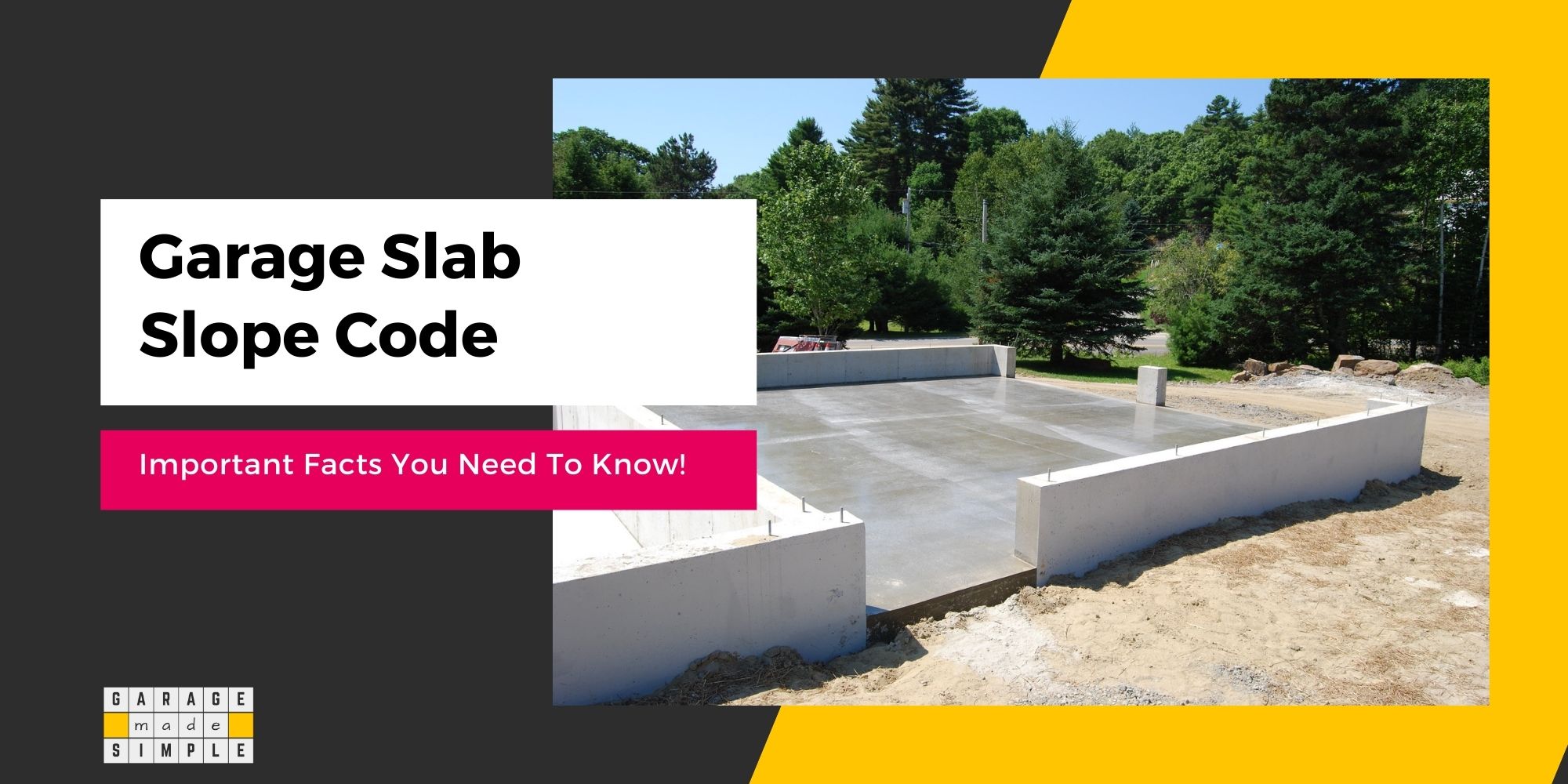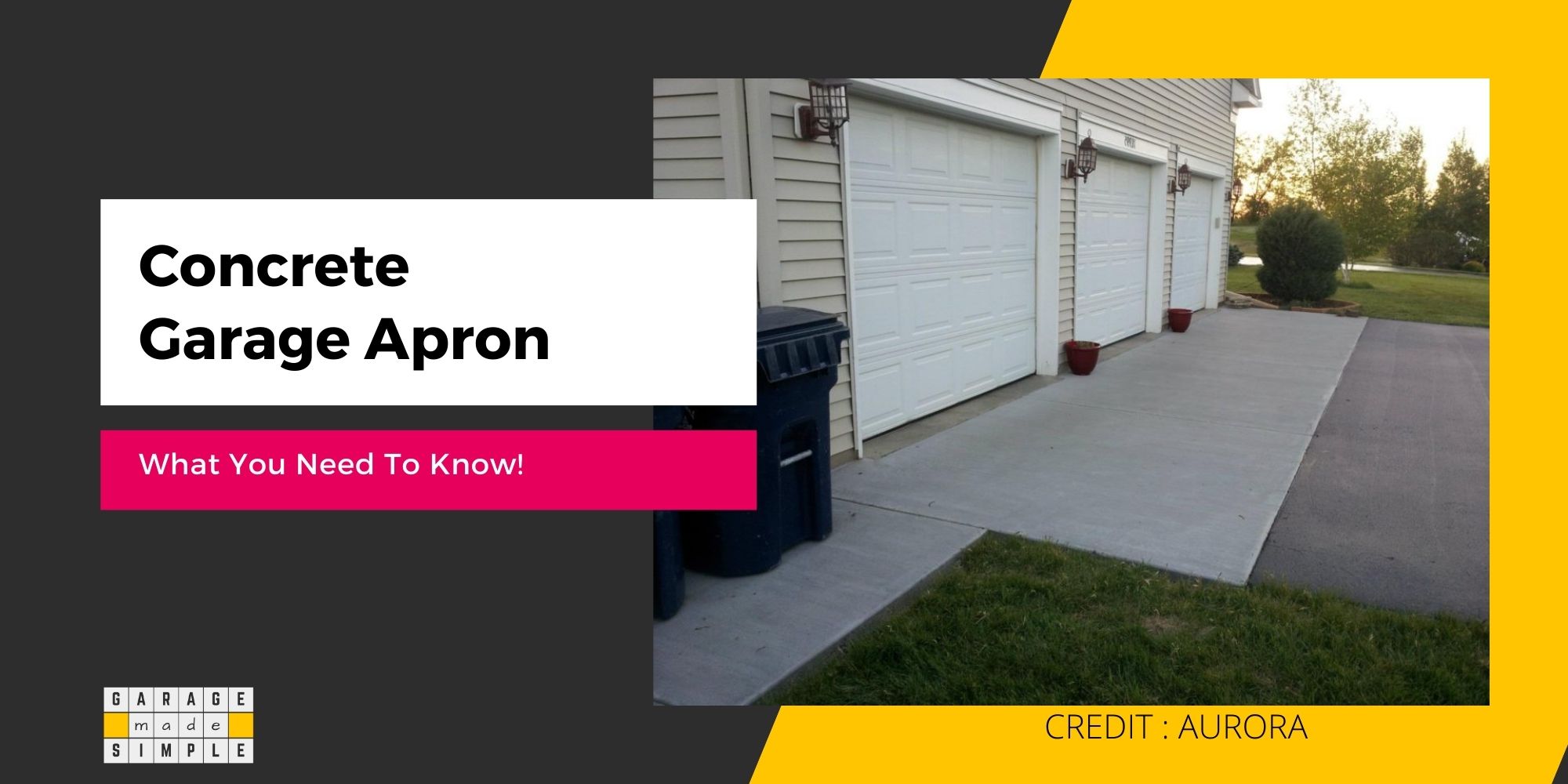Rebar for Concrete Slab: Comprehensive Guide
garagemadesimple.com is a participant in the Amazon Services LLC Associates Program, an affiliate advertising program designed to provide a means for sites to earn advertising fees by advertising and linking to Amazon.com . The website is also an affiliate of a few other brands.
Rebar for concrete slab serves as a skeletal framework that reinforces the concrete’s compressive strength with the steel rebar’s tensile strength. The resulting composite reinforced concrete slab is a common element in modern day construction projects.
Essentially, rebar is a steel rod. Rebars, cut to size, are arranged as a grid and placed in the form before pouring the concrete mix. This grid becomes an integral part of the concrete slab as it dries and cures.
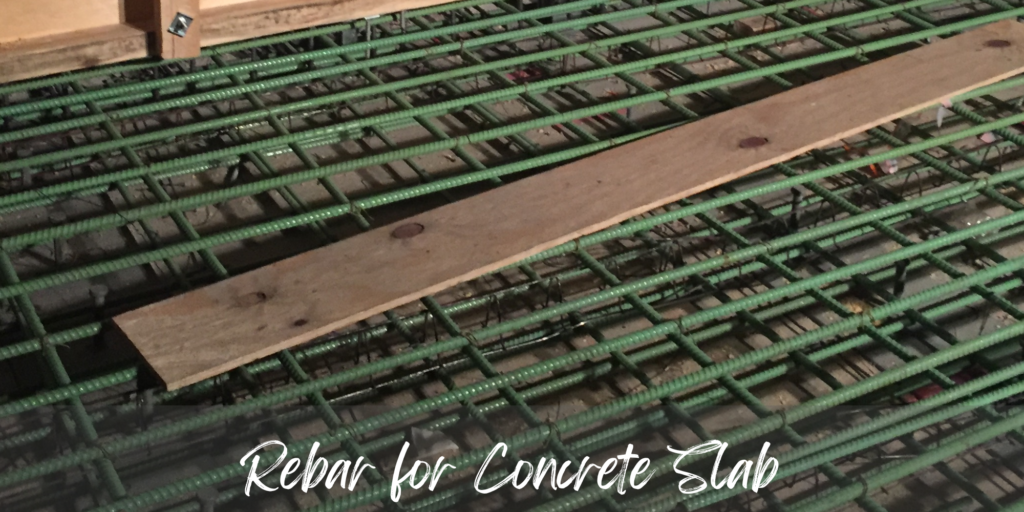
The reinforced concrete slab, that is a composite of concrete and rebar, acquires the compressive strength of concrete and the tensile strength of the steel rebar. The reinforced concrete slab can withstand heavy loads, ground movements, and expansionary stresses caused by thermal variations.
Rebar for concrete slab prevents cracks from expanding and compromising the structural integrity. Reinforced concrete slabs are extremely strong, resilient and durable.
What Is Rebar for Concrete Slab?
Rebar, an abbreviation for reinforcing bar, is essentially a steel rod that is embedded in a concrete slab, usually in a grid pattern, at the time of the concrete mix pour, such that it becomes an integral part of the reinforcement concrete slab, a composite material.
Typically, rebars are sturdy, round steel bars, often with ridges for better grip to the concrete. These bars are manufactured to precise specifications, ensuring consistency and reliability in their strength.
Steel rebar for concrete slab provides the required reinforcement that concrete needs to increase its tensile strength. Concrete has very high compressive strength but quite poor tensile and flexural strength. The tensile strength of concrete is typically 10 – 15% of its compressive strength.
Without the incorporation of rebar for concrete slab, the slab would readily crack and crumble under point loads or ground movement.
Does Concrete Always Need Rebar?
For most residential projects compressive strength for concrete slabs ranges from 2500 psi to 4000 psi. The tensile strength, on the other hand, ranges from 300 psi to 700 psi which is 10% to 15% of compressive strength.
There are some household applications, such as pads for garden sheds or trash cans or even garden pathways that need to handle fairly low loads. In such cases the slab thickness can be kept low and reinforcement avoided.
To safeguard the concrete slab from cracking, it is advisable to reinforce it using fiber mesh which can be incorporated in the concrete mix at the time of the pour.
When to Use Wire Mesh for Concrete Slab?
Concrete slabs that will be subjected to moderate loads need to be 4” thick and should be reinforced with welded wire mesh. Welded wire mesh doesn’t provide the same level of reinforcement as rebars but is easier to install, cheaper and adequate for moderate loads.
Welded wire mesh is a good reinforcing option for smaller projects, like patios or garden walkways, where the load-bearing requirements are low. The advantage of using wire mesh for concrete slabs is that the wire mesh will ensure that the concrete slab continues to hold its shape in spite of widespread cracks.
In instances where cost, ease of installation, or minor reinforcement needs are the priorities, welded wire mesh becomes a practical choice.
always require rebar, especially for minor applications like garden pathways or decorative surfaces. However, in situations where the concrete will bear substantial loads or face environmental stresses, such as driveways or industrial floors, rebar is essential. It reinforces the concrete, preventing cracks and ensuring structural integrity, making it imperative for durable, long-lasting constructions.
When to Use Rebar for Concrete Slab?
Actually rebar for concrete slab is the best option, especially if the slab is likely to be subjected to moderate to heavy loads, significant ground movement or appreciable temperature variations.
One important condition for using rebar for concrete slab is that the slab thickness should be at least 5”. Thicker the better. Higher thickness is necessary to ensure that the concrete slab has adequate compressive strength.
Rebar for concrete slab are typically used for reinforcing driveways, garage floors, basement floors, warehouse & industrial floors, etc. as these are expected to have a high load bearing capacity and may also have stresses from ground movement.
More importantly, only a fully and well encapsulated reinforcement is effective. In case there is not enough concrete around the rebar, the rebar does not become an integral part of the reinforced concrete slab.
A thin concrete slab (4” or thinner” will just crumble and disintegrate when subjected to tensile or flexural stresses.
Choosing Between Rebar and Wire Mesh for Concrete Slab
If you are not sure as to whether rebar or wire mesh is better for your application you can check with the list below to make a decision.
- Strength: Rebar is stronger and has a higher load-bearing capacity than wire mesh.
- Slab thickness: Rebar is better for concrete slabs that are 5 inches or thicker. Wire mesh is better for slabs that are 4 inches or less.
- Cost: Wire mesh is less expensive than rebar.
- Application: Rebar can be used in any structure, at any angle. Wire mesh can only be used in horizontal slabs.
- Ease of installation: Wire mesh is easier to install than rebar.
Integrating Wire Mesh with Rebars for Enhanced Strength
The use of rebar and wire mesh need not be exclusive to one another. For very thick slabs that will need to bear fairly high loads, it is often better to use both. Here is how you can do it.
Combine wire mesh with rebars in thick slabs and under heavy loads to significantly increase strength. Position the mesh slightly above the rebars, avoiding contact.
This combination distributes the load evenly and reinforces the slab against both surface and structural stresses. Careful integration ensures a robust, durable slab that can withstand varying pressures.
Types of Rebar for Concrete Slab
A rebar for concrete slab is essentially a steel bar used to strengthen concrete slabs. It is available in various types of steel, both coated and uncoated. Steel rebars also differ from one another in diameter cross-sectional profile.
Each type of rebar has its own unique properties that makes it suitable for a specific application. Here are some of the common types of rebar:
Carbon Steel Rebar
Carbon steel rebar is the most commonly used type of rebar for concrete slab. It is inexpensive and offers a good balance of strength and durability.
However, it is susceptible to corrosion, and should be avoided in harsh environments and coastal areas.
Stainless Steel Rebar
Stainless steel rebar is more expensive than carbon steel rebar, but it is a major upgrade as it is virtually corrosion-resistant.
It is a good choice for a reinforced concrete slab that will be exposed to harsh environments, such as marine or coastal applications.
Epoxy-Coated Rebar
Epoxy-coated rebar is carbon steel rebar with a protective coating of epoxy. The epoxy coating is corrosion resistant. However, compared to a Stainless Steel rebar, Epoxy-Coated rebar has a major weakness.
In case the epoxy coating gets scratched or damaged during transportation or installation, corrosion can occur at that point. Worse still, it can creep under the coating and the rebars can continue to rust.
Fiber-reinforced Polymer (FRP) Rebar
FRP rebar is a composite material made from fibers such as fiberglass, carbon fiber, or basalt fiber. It is non-corrosive and lightweight, but it is also more expensive than steel rebar.
Galvanized Rebar
Galvanized rebar is carbon steel rebar with a zinc coating. This coating provides additional protection against corrosion.
Rebar Size Chart
In the US the rebar size and related specifications are laid out under ASTM A955. The rebar size is denoted as #x which really is the diameter of the rebar in 8th of an inch. So a #3 rebar has a nominal diameter of 3/8 inches.
While the sizes run from #2 to #18, when it comes to rebar for concrete slab in the context of most residential projects, you will be dealing with #3, #4 and maybe #5.
| Rebar Size | Diameter (in) | Area (in2) | Weight (lb/ft) |
|---|---|---|---|
| #3 | 3/8″ | 0.11 | 0.376 |
| #4 | 1/2″ | 0.20 | 0.688 |
| #5 | 5/8″ | 0.31 | 1.043 |
Rebars are also given “grades” which is a measure of the steel’s minimum yield strength. The most common grades used in residential concrete slabs are 40, 60 and 75. Actually 60 is the most preferred as it gives 50% higher strength than 40 at a nominal increase in cost.
Rebars come with standard markings. You can figure out the rebar specs by reading this marking. For example, the marking H 4 S 60 tells you that H is the code of the mill where the rebar was rolled, 4 is the rebar size (#4 or 1/2″ diameter), S is the material (Stainless Steel) and 60 is the grade of the rebar.
Rebar Spacing for Concrete Slab
Rebar size and rebar spacing for concrete slab will determine how much steel goes into the concrete. Steel to concrete ratio is important in getting a reinforced concrete slab that is just right for your application.
The proper rebar spacing for concrete slab helps to ensure that the slab is resistant to cracking and strong enough to withstand the expected load.
Factors to Consider
The following factors should be considered when determining the appropriate rebar spacing for concrete slab:
- Slab Thickness: Thicker slabs generally require less rebar than thinner slabs.
- Expected Load: Slabs that are expected to support heavy loads require more rebar than slabs that are expected to support light loads.
- Subgrade Conditions: Slabs that are constructed on weak or unstable subgrades require more rebar than slabs that are constructed on strong and stable subgrades.
- Concrete Strength: Concrete slabs made with higher-strength concrete require less rebar than slabs made with lower-strength concrete.
- Rebar Size: Thicker rebar can be spaced further apart than thinner rebar.
- Exposure Conditions: Slabs that are exposed to harsh environments, such as marine or coastal environments, require more rebar than slabs that are protected from the elements.
Rebar Spacing Guidelines
The following are some general guidelines for rebar spacing in concrete slabs:
- For 4-inch slabs: #3 or #4 rebar spaced at 12 to 18 inches on center.
- For 6-inch slabs: #4 or #5 rebar spaced at 12 to 18 inches on center.
- For slabs that will be subjected to heavy loads: #4 or #5 rebar spaced at 12 inches on center.
- For slabs that are exposed to harsh environments: #4 or #5 rebar spaced at 12 to 18 inches on center, with a higher grade of rebar used if necessary.
Rebar Placement in Concrete Slab
It is quite common for even experienced contractors to make a mistake when it comes to rebar placement in concrete slab. Sometimes, they don’t know any better, bore often than not they just take short cuts.
Actually the incorrect rebar placement in concrete slab can totally negate the benefit that you hoped to derive.
Rebar Placement
Rebar should be placed in the upper third of the slab thickness.
This is because shrinkage and temperature cracks originate at the surface of the slab, and rebar in the upper third of the slab is most effective in controlling these cracks.
Rebar Supports
Rebar supports are used to hold the rebar in place at the correct height and spacing. Common rebar supports include chairs, precast concrete bar supports, and wire bar supports.
Use “Concrete Reinforcing Chairs” under the rebar cross points to give them the required lift.
Rebar Tying
Rebar should be tied together at regular intervals to prevent it from moving during concrete placement. Common rebar tying methods include snap tie, wrap and snap tie, saddle tie, and figure-eight tie.
Concrete Placement
Concrete should be placed carefully to avoid dislodging the rebar. It is important to use a concrete pump or other methods to place the concrete in a uniform manner.
Acceptable Deviation or Tolerance
The allowable deviation in rebar placement is typically ±3/4 inch from the specified location. For slab thicknesses 12 inches or less, the concrete cover tolerance is – 3/8 inch measured perpendicular to the concrete surface.
Useful Tips
- Use a layout drawing to determine the correct placement of rebar.
- Mark the location of rebar on the subgrade with stakes or string lines.
- Keep the rebar grid 2 – 6 inches from the concrete slab edge to prevent exposure and corrosion.
- Use rebar supports to hold the rebar in place at the correct height and spacing.
- Tie rebar together at regular intervals to prevent it from moving during concrete placement.
- Place concrete carefully to avoid dislodging the rebar.
Rebar Calculator for Slab
For a quick calculation just use the calculator below:
For calculating the rebar requirement for a concrete slab manually, follow this step-by-step method:
- Measure the dimensions of the slab (length (SL) and width (SW).
- Decide on the spacing between rebars (S) and the inset from the edge of the slab (E) before the rebar is used. (Typical spacing is 12-18 inches, and typical inset is 2-4 inches.)
- Determine the dimensions of the rebar grid. Subtract 2E from SL to get Grid Length (GL). Get the Grid Width (GW) in the same way.
- Calculate the number of rebars along the length (#L = GW/S) and width #W = GL/S).
- The total length (TL) of rebars required will be (#L X GL + #W X GW).
- Adjust the total length of rebar to account for the lapping length. This is done by adding the lapping length to the total length of rebar.
Bottom Line
The salient points of Rebar for Concrete Slab are:
- Rebar is necessary for reinforcing concrete slabs that are 5″ or thicker and will be subjected to moderate to heavy loads, significant ground movement, or appreciable temperature variations.
- The most common types of rebar for concrete slab are carbon steel, stainless steel, epoxy-coated, FRP, and galvanized rebar.
- The most common rebar sizes used in residential concrete slabs are #3, #4, and #5.
- The most common rebar grade used in residential concrete slabs is 60.
- Rebar should be placed in the upper third of the slab thickness.
- Rebar supports should be used to hold the rebar in place at the correct height and spacing.
- Rebar should be tied together at regular intervals to prevent it from moving during concrete placement.
Thank you very much for reading the post. I do hope you found it informative and useful.


